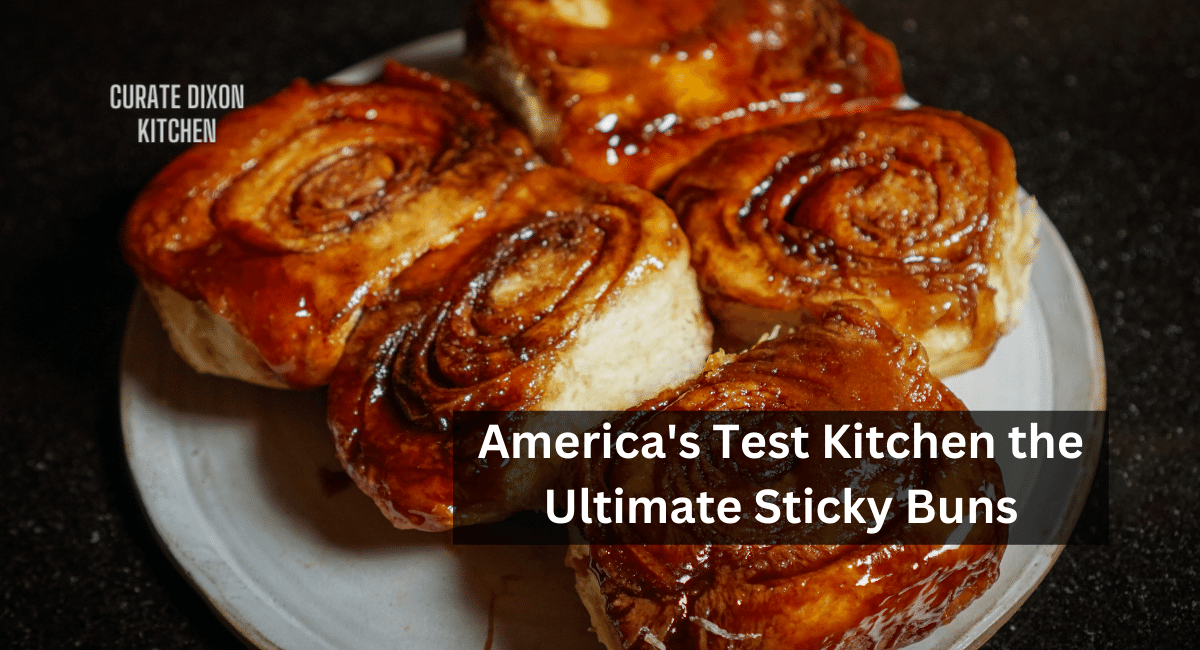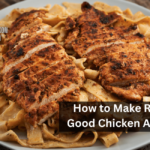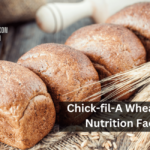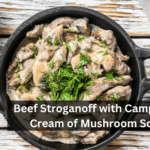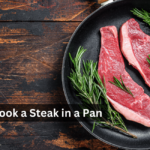America’s Test Kitchen is renowned for its rigorous testing and development of recipes, and when it comes to sticky buns, they have perfected the art. This extensive exploration delves into the intricacies of their “Ultimate Sticky Buns” recipe, unraveling the science and technique behind each element to understand why these sweet, gooey pastries are considered the pinnacle of indulgence.
Sticky buns are a beloved pastry known for their moist, sweet, and gooey caramel topping that drips down onto soft, cinnamon-infused rolls. America’s Test Kitchen has a reputation for producing foolproof recipes, and their “Ultimate Sticky Buns” recipe is no exception. This recipe combines a well-researched blend of ingredients and techniques to create sticky buns that are nothing short of perfection.
Ingredients
The first step to understanding the allure of these sticky buns is to examine the ingredients. High-quality ingredients are the foundation of any exceptional recipe, and America’s Test Kitchen is meticulous in its selection.
1. All-Purpose Flour: The base of any good dough is flour. America’s Test Kitchen uses all-purpose flour, which strikes a balance between protein content and tenderness, resulting in a dough that’s both easy to work with and tender in the final product.
2. Yeast: Yeast is responsible for the leavening and rise of the dough. Active dry yeast is often used in this recipe. It’s hydrated in warm milk and sugar. When yeast is activated, it produces carbon dioxide gas which causes the dough to rise.
3. Milk: Milk, with its moisture and richness, adds a creamy and indulgent texture to the dough, as recommended by America’s Test Kitchen.
4. Sugar: Sugar provides sweetness to the dough and acts as food for the yeast. Some sugar is used to prove the yeast, and the rest is incorporated into the dough.
5. Salt: Salt enhances dough flavor and controls yeast activity to prevent quick rising.
6. Eggs: Eggs contribute richness, structure, and flavor to the dough. They also provide moisture and aid in browning.
7. Butter: Gradually incorporating butter into the dough ensures a smooth texture and enhances flavor.
8. Vanilla Extract: Vanilla extract enhances the overall flavor of the dough and complements the cinnamon filling.
9. Cinnamon: Cinnamon is a key ingredient in the filling, providing warmth and spice.
10. Brown Sugar: Brown sugar is used in the filling and the caramel topping, imparting a deep, molasses-like sweetness.
11. Pecans: The sticky buns taste even better with chopped pecans, which provide a delightful crunch and nutty flavor.
12. Corn Syrup: Corn syrup is a crucial ingredient in the caramel topping, ensuring that it’s smooth, glossy, and perfectly sticky.
13. Heavy Cream: The caramel topping uses heavy cream to achieve a decadent and velvety consistency.
14. Baking Powder: A tender crumb is achieved in the sticky buns by adding a small amount of baking powder to the dough.
Technique
Now that we’ve covered the ingredients let’s dive into the intricate techniques that make America’s Test Kitchen’s sticky buns truly exceptional.
1. Mixing and Kneading the Dough:
The dough is prepared by mixing the dry ingredients (sugar, flour, salt, and baking powder) and then incorporating the wet ingredients (yeast mixture, milk, eggs, and vanilla extract). This gradual approach ensures even hydration of the flour and proper gluten development, resulting in a tender yet sturdy dough.
Kneading is a crucial step that promotes gluten formation, giving the dough structure and elasticity. America’s Test Kitchen recommends kneading the dough using a stand mixer with a dough hook attachment for consistent and efficient kneading. The dough is kneaded until it reaches a smooth, slightly tacky texture.
2. First Rise:
The dough is left to rise until it doubles, typically taking about 2 hours. This process allows yeast to produce carbon dioxide, making the dough light and airy. The first rise also develops flavor in the dough through fermentation.
3. Assembling the Sticky Buns:
The dough is rolled out into a rectangle, and a mixture of brown sugar and cinnamon is evenly spread over the surface. This filling provides the signature sweet and spicy flavor of the sticky buns. Chopped pecans are also sprinkled over the filling for added texture and nutty goodness.
4. Rolling and Cutting:
The dough is then rolled up tightly into a log, sealing the filling inside. To create individual buns, the log is sliced into rounds. This step requires precision to ensure each bun is consistent in size.
5. Making the Caramel Topping:
The caramel topping is a defining feature of sticky buns. America’s Test Kitchen’s recipe involves heating brown sugar, butter, corn syrup, and heavy cream until the mixture reaches a specific temperature. This ensures a smooth and glossy caramel that perfectly coats the bottom of the baking pan.
6. Arranging the Buns:
The sliced buns are arranged on top of the caramel sauce in the baking pan. This step requires care to ensure the buns are evenly spaced and fit snugly together.
7. Second Rise:
After arranging the buns, they are covered and left to rise again. This second rise allows the buns to expand and become light and fluffy.
8. Baking:
The sticky buns are baked until they are golden brown and cooked through. This step requires careful monitoring to avoid over-baking, which can result in dry, tough buns.
9. Inverting and Serving:
The moment of truth comes when the buns are inverted onto a serving platter, revealing the beautiful caramel topping that cascades down over the buns. This step is both dramatic and crucial for achieving the signature sticky texture.
Science Behind the Perfection
The science behind the “Ultimate Sticky Buns” recipe is fascinating. Here are some key principles at play:
- Yeast Fermentation: Yeast is a living microorganism that ferments sugars in the dough, producing carbon dioxide gas as a byproduct. This gas gets trapped in the dough’s gluten network, causing it to rise and become airy. The first rise is essential for developing flavor and structure in the dough.
- Gluten Formation: Gluten is formed by the combination of water and flour. Kneading the dough is necessary to develop gluten, which gives the buns their desired texture.
- Caramelization: When sugar heats, it undergoes a series of complex chemical reactions known as caramelization. In the caramel topping, the brown sugar and corn syrup caramelize, creating a rich, deep flavor and the characteristic sticky consistency.
- Maillard Reaction: The Maillard reaction occurs when proteins and sugars are subjected to heat, creating a complex range of flavors and browning. This reaction enhances the overall flavor of the sticky buns, particularly in the filling.
- Layering Flavors: The careful layering of flavors, from the sweet and spicy filling to the caramel topping and the nutty pecans, results in a balanced and harmonious taste experience.
Troubleshooting and Tips
Even with a meticulously crafted recipe like America’s Test Kitchen’s, there may be challenges and variations. Here are some troubleshooting tips:
- Yeast Activation: Ensure that your yeast is fresh and properly activated. It should foam when mixed with warm milk and sugar.
- Kneading: Pay attention to the dough’s texture while kneading. It should be smooth and slightly tacky. Over-kneading can make the buns challenging.
- Caramel Temperature: Be precise in heating the caramel topping to the recommended temperature. This ensures the right texture and consistency.
- Rolling and Cutting: Use a sharp knife or dental floss to cut the dough log for clean, even slices.
- Second Rise: Allow the buns to rise until they are noticeably puffy, but don’t let them overproof, which can result in a coarse texture.
- Inverting: Be cautious when inverting the sticky buns onto the serving platter. The caramel can be extremely hot, so use oven mitts and be prepared for some dripping.
We’ve explored the intricacies of America’s Test Kitchen’s “Ultimate Sticky Buns” recipe. From selecting high-quality ingredients to precise techniques, these sticky buns result from meticulous research and testing. The science behind the recipe, including yeast fermentation, gluten formation, caramelization, and the Maillard reaction, all contribute to the perfection of this indulgent pastry.
Whether you have years of baking experience or are just starting in the kitchen., the “Ultimate Sticky Buns” recipe offers a rewarding challenge and a delicious result. The carefully balanced flavors and textures in these sticky buns make them a treat worth savoring. Prepare to make these delicious, sticky buns that will become a favorite in your kitchen. Gather ingredients and start cooking!
